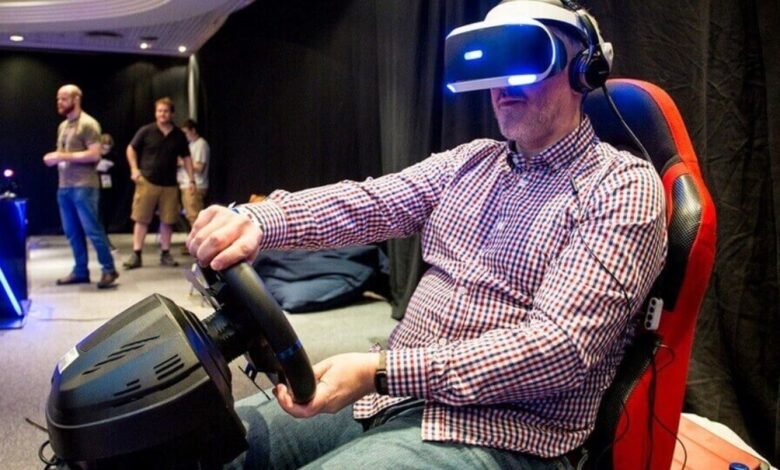The Future of Virtual Reality Gaming: What to Expect

As technology continues to evolve at a rapid pace, virtual reality (VR) gaming stands at the forefront of a digital revolution, offering immersive experiences that redefine how we interact with games. With advancements in hardware, software, and user interfaces, the future of VR gaming promises to transform not only the gaming industry but also how we perceive entertainment. This article explores the anticipated developments in VR gaming, focusing on its technological advancements, potential applications, and the challenges that lie ahead.
Technological Advancements in VR Gaming
The landscape of virtual reality gaming is changing swiftly, largely due to advancements in hardware and software. The introduction of high-resolution displays and improved tracking technologies has significantly enhanced the realism and immersion of VR games. Current headsets, such as the Meta Quest and Valve Index, provide players with a near-seamless experience, but the next generation of VR devices is expected to push these boundaries even further.
One of the most exciting prospects is the development of lightweight, wireless headsets that offer increased mobility without sacrificing performance. Companies are investing heavily in reducing the size and weight of VR gear, aiming for devices that feel more like a pair of glasses than bulky headsets. Moreover, advances in eye-tracking technology are set to enhance user experience by allowing games to respond dynamically to where players are looking, creating a more intuitive interface.
In addition to hardware improvements, software is evolving to deliver richer and more interactive experiences. Game engines like Unity and Unreal Engine are increasingly integrating VR capabilities, allowing developers to create immersive environments that react in real-time to user interactions. As artificial intelligence (AI) becomes more sophisticated, we can expect NPCs (non-playable characters) to exhibit more lifelike behaviors, enhancing storytelling and gameplay depth.
The Rise of Social VR
Another significant trend in the future of virtual reality gaming is the rise of social VR platforms. As players seek more interactive experiences, VR is poised to create social spaces where gamers can gather, interact, and play together, regardless of geographical barriers. Platforms like VRChat and Horizon Worlds are already paving the way for social interaction in virtual spaces, and we can expect more such platforms to emerge.
These social VR environments not only facilitate gaming but also encourage creativity and collaboration. Players can build virtual worlds together, attend events, or even engage in virtual meetings, all within immersive settings. This shift could lead to a new form of social networking, one that emphasizes real-time interaction and shared experiences rather than curated feeds and asynchronous communication.
Moreover, as VR technology becomes more accessible, we may see a democratization of game development. Tools that allow users to create and share their own content could lead to a surge in user-generated experiences, enriching the gaming landscape and fostering community engagement. This trend could redefine what it means to be a gamer, expanding the definition beyond simply playing games to include creating and sharing them as well.
Integration with Other Technologies
The future of virtual reality gaming will also involve deeper integration with other emerging technologies. For instance, augmented reality (AR) and mixed reality (MR) are becoming increasingly relevant as they blend digital and physical worlds. The combination of VR and AR can offer unique gameplay experiences that are interactive and engaging, allowing players to experience their surroundings in a new light.
Imagine a game where players can step into a virtual battlefield that overlays their real environment, interacting with both virtual objects and physical surroundings. This synergy between VR and AR could pave the way for innovative game mechanics, where players use their real-world knowledge and surroundings to solve puzzles or complete challenges.
Additionally, the integration of haptic feedback technology will enhance immersion in VR games. Haptic suits and devices that provide tactile feedback can simulate sensations such as touch, impact, and environmental interactions, creating a more visceral gaming experience. This technology will allow players to feel the weight of virtual objects or the impact of in-game actions, further blurring the line between reality and virtual environments.
Expanding the Audience
As virtual reality gaming becomes more sophisticated, it also has the potential to attract a wider audience. Currently, VR gaming is often perceived as a niche market, but improved accessibility and affordability could broaden its appeal. Initiatives to make VR equipment more affordable, combined with a growing library of diverse games, could encourage more players to explore virtual reality.
Moreover, the potential for VR to enhance educational and training experiences could draw in non-gaming audiences. Fields such as medicine, engineering, and even art can benefit from VR simulations, making learning more interactive and engaging. By showcasing VR’s practical applications, the industry can attract individuals who may not typically consider gaming as a form of entertainment.
In addition to this, the mental health benefits of VR gaming are gaining recognition. Therapeutic VR applications are being developed to help treat conditions such as anxiety and PTSD, showing that VR can serve a purpose beyond entertainment. As awareness of these benefits grows, more people may be inclined to engage with VR technologies, broadening the demographic of VR gamers.
Challenges Facing VR Gaming
While the future of virtual reality gaming is promising, it is not without its challenges. One of the most significant barriers is the issue of motion sickness, which can occur when players experience a disconnect between their physical movements and the virtual environment. Developers are working on solutions, such as adjusting frame rates and incorporating teleportation mechanics, but overcoming this hurdle is crucial for widespread adoption.
Furthermore, the need for substantial computing power can be a limiting factor. High-quality VR experiences often require powerful gaming rigs, which can be prohibitively expensive for some players. As technology advances, we may see more cloud-based gaming solutions that allow users to stream VR games without the need for high-end hardware. This shift could democratize access to VR gaming, enabling more players to join the fray.
Lastly, there are concerns about privacy and data security in social VR environments. As these platforms evolve and gather more user data, ensuring the protection of personal information will be paramount. Developers and companies must prioritize user safety and implement robust security measures to build trust among players.
Conclusion
The future of virtual reality gaming is a landscape rich with potential. With advancements in technology, an emphasis on social interaction, and the integration of emerging technologies, the possibilities are virtually limitless. As VR gaming continues to evolve, it is likely to attract a broader audience, extending its reach beyond traditional gamers to encompass a wide array of users.
While challenges remain, such as overcoming motion sickness, improving accessibility, and ensuring data security, the industry is poised for growth and innovation. As we look ahead, it is clear that virtual reality gaming will not only redefine entertainment but also reshape how we connect with each other and interact with the digital world. The coming years promise to be an exciting time for gamers and developers alike, as we collectively explore the uncharted territory of virtual reality.



